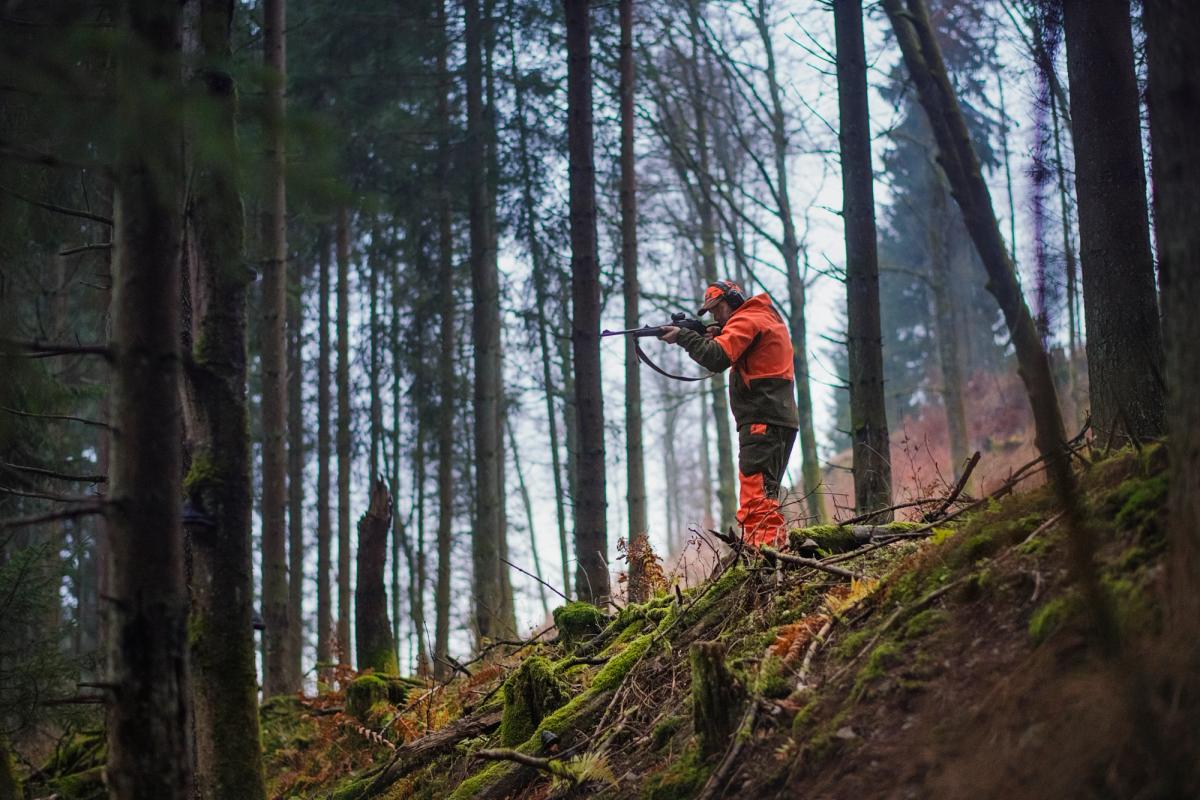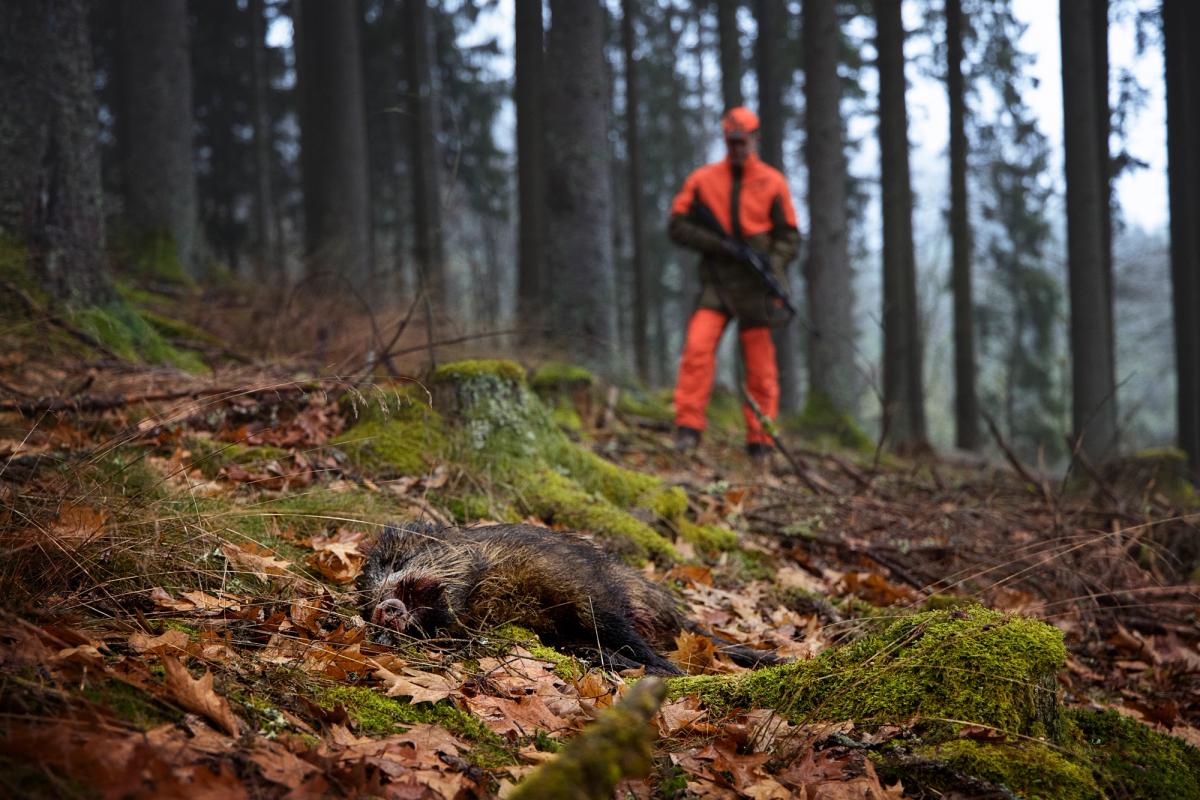Driven Hunt
How not to lose the animal on a driven hunt
Your greatest failure as a hunter is not if you do not fire or don’t see anything during your hunt. It is if you injure or kill the game and do not find it. With these tips, you minimize the risk of doing just that.
Hunting is an adventure, meeting with friends, time of relaxation, competition with nature and many other things. However, forgetting that killing is its most important element, would be deceiving yourself (and others around you).
The fact that we take another’s creature life to possess its flesh, skin or trophy antlers, tusks etc. must mobilize us to do it with deep respect. This should be manifested primarily in making the shot as clean and effective as possible. That would make one more difference between a hunter and a shooter. Hunting must be different from training or competing at a shooting range. It is bad when its quality is measured in numbers, kilograms, or some weird scoring points.
I'm not a big fan of naming King of the Hunt the person who shot the most animals. I dislike it even more when someone who has been least effective is proclaimed King of Missed Shots and receives some kind of humorous souvenir of the occasion. It does not amuse me at all.
The hunter's greatest failure is not that he did not fire or even didn’t see anything hunting, but that he injured or killed the game and did not find it. Therefore, I would like to share some advice from someone who not only hunts himself, but supports the whole event as a blood tracker. I hope it will help not to lose the game.
Remember - we all work in a team and everyone cares about a good result. High efficiency is a cause for joy and nothing is more depressing than when game is lost.
At the briefing
- Listen carefully to what the hunting leader says. What are the rules? What is expected of you after a shot? Is there anyone responsible for finding injured game? How are you supposed to provide information about the shot?
- If you do not receive a special marking tape from the organizer, make sure you have a supply of tissue or toilet paper. It makes invaluable signs for a blood stalker.


At the post
- At the stand, find out about your position as much as possible.
- Where exactly are you allowed to shoot? What are the limit distances and angles?
- What are the landmarks that will allow you to locate the place where you should start your search later? Are there any characteristic trees, bushes, stones etc.? It is not a bad idea to have a small rangefinder on you, especially when it is allowed to shoot far (i.e. on monterias it is not uncommon to face distances reaching beyond 100 and even 200m).
- What are the most convenient places to shoot? Knowing about them will allow you to choose the best moment - wait a bit or take a shot before it's too late.

The heat
- Driven hunt can be very exciting. Enjoy it, but keep your head cool.
- Take a straight shot. It is better to be picky than to shoot in bursts.
- Refrain from shooting when the game is too far away, moves too fast or is obstructed by trees, weeds, or other obstacles.
- Don't shoot when you are not sure you will hit. Don't try your luck. The shooting range is the right place to test and improve your skills. An animal is not a target or a clay pigeon.
- Don't aim at another animal unless you are not sure the first one is down or at least hit hard.
- Don’t try to get an impressive effect, aim at the heart-lung area, not the head. This is much bigger target and leaves a huge margin for error. It is not true that if an animal does not drop immediately after a head or neck shot, it means that it has not been hit at all. A slight mistake can mean a broken jaw, a defect in the esophagus or trachea - fatal wounds, but only after many days of suffering.
- Don't admire your shot - instead, be ready to send another bullet at the same target. When the game collapses spectacularly should arouse exceptional attention, not the desire to reach for a cigar to celebrate success. Very often the animal that has been knocked out is only stunned. It may stand up abruptly after a while and go far away injured, often without a chance to be picked up.


After the drive
- If not told otherwise, go to the place where the game was when shot. Look for any hit confirmation (blood, bone, hair, deeper hoof marks). Mark them. If you don’t have anything on you that would work for this purpose, break a twig and lay it visibly on the ground. That is an old hunting tradition and all of us can read these signs. You would be surprised how many times they made a great start for a good tracking.
- Usually you will be allowed to walk a bit on the trail - but don't go far. If there is no game in sight, return to your group - this job belongs to the blood tracker, not you.
- If an animal needs to be put down, be sure you are allowed to do it. This is often unacceptable when there are dogs around and for safety reasons only their handler can do it.


From the blood tracker point of view
Nothing makes our job easier than a disciplined hunter who gives accurate information personally. And on the other hand - sometimes a simple job becomes extremely difficult, because the place has not been correctly marked, information was chaotic and the trail trampled completely.
Remember - we all work in a team and everyone cares about a good result. High efficiency is a cause for joy and nothing is more depressing than when game is lost.
// Written in coporation with Lukasz Dzierzanowski, who is an author, hunter, blood tracker and gun enthusiast from Poland. When not hunting, he teaches Computer Engineering at a technical university in his hometown of Opole. Photos by Pulsar and Härkila //